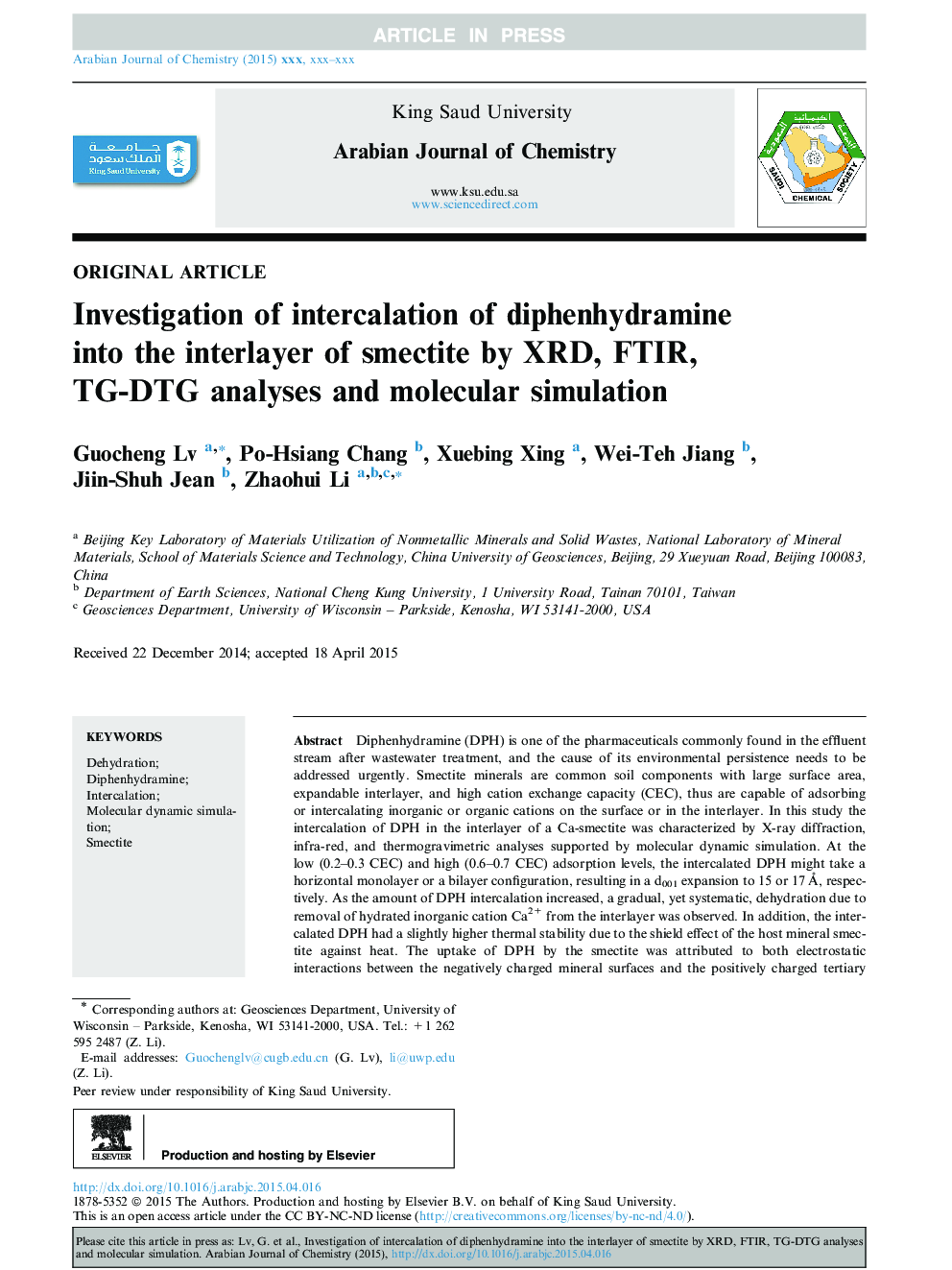| Article ID | Journal | Published Year | Pages | File Type |
|---|---|---|---|---|
| 5142002 | Arabian Journal of Chemistry | 2017 | 7 Pages |
Abstract
Diphenhydramine (DPH) is one of the pharmaceuticals commonly found in the effluent stream after wastewater treatment, and the cause of its environmental persistence needs to be addressed urgently. Smectite minerals are common soil components with large surface area, expandable interlayer, and high cation exchange capacity (CEC), thus are capable of adsorbing or intercalating inorganic or organic cations on the surface or in the interlayer. In this study the intercalation of DPH in the interlayer of a Ca-smectite was characterized by X-ray diffraction, infra-red, and thermogravimetric analyses supported by molecular dynamic simulation. At the low (0.2-0.3 CEC) and high (0.6-0.7 CEC) adsorption levels, the intercalated DPH might take a horizontal monolayer or a bilayer configuration, resulting in a d001 expansion to 15 or 17Â Ã
, respectively. As the amount of DPH intercalation increased, a gradual, yet systematic, dehydration due to removal of hydrated inorganic cation Ca2+ from the interlayer was observed. In addition, the intercalated DPH had a slightly higher thermal stability due to the shield effect of the host mineral smectite against heat. The uptake of DPH by the smectite was attributed to both electrostatic interactions between the negatively charged mineral surfaces and the positively charged tertiary amine and cation exchange interactions between DPH+ and hydrated Ca2+. Thus, smectite minerals could serve as a sink to remove dissolved DPH from water on the one hand, and as a carrier to transport intercalated DPH in the environment on the other hand.
Related Topics
Physical Sciences and Engineering
Chemistry
Chemistry (General)
Authors
Guocheng Lv, Po-Hsiang Chang, Xuebing Xing, Wei-Teh Jiang, Jiin-Shuh Jean, Zhaohui Li,
